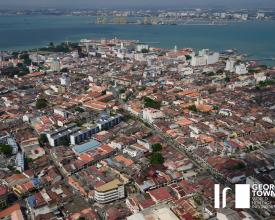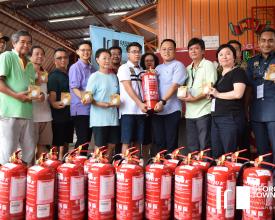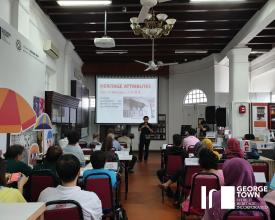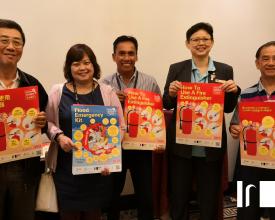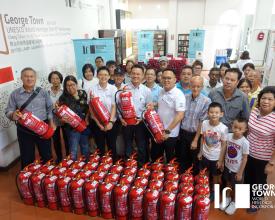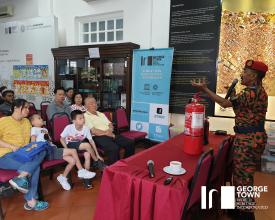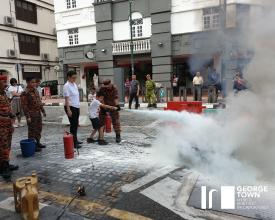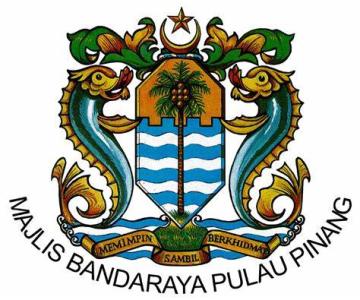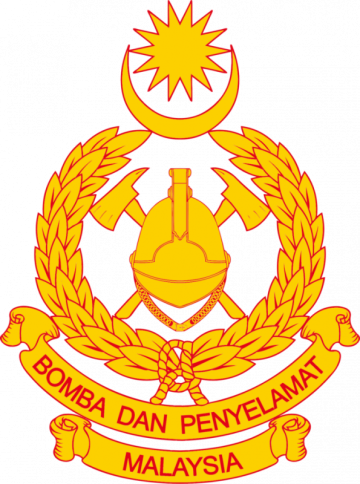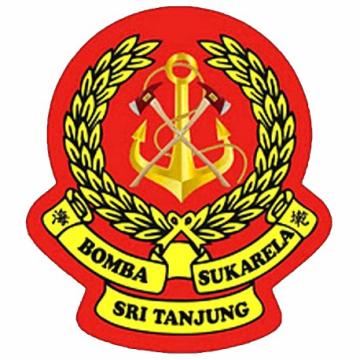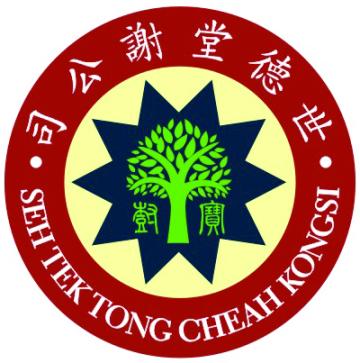
Community-Based Disaster Risk Management for George Town World Heritage City, Malaysia

In 2008, George Town Heritage City (Malaysia) was inscribed on the World Heritage List as part of the site of Melaka and George Town, Historic Cities of the Straits of Malacca in 2008 under criteria (ii), (iii) and (iv). This designation highlighted the unique influences of the Malay, Chinese, Indian and European cultures in the two cities, which also reflected in the historic urban fabric, the multi-cultural communities and their specific practices, rituals and daily lives, and created a unique architectural style of a townscape that is exceptional in East and South Asia. George Town World Heritage Incorporated (GTWHI) as the Site Manager has been working with local communities and other stakeholders in developing community-based Disaster Risk Management for George Town. Among the approaches conducted are empowerment of local communities, implementation of incentives, as well as continuous communication with the agencies and authorities dealing with disaster risk prevention and management
Context
Challenges addressed
Heritage management is always challenging in terms of balancing conservation requirements, the needs of local communities, and enabling a sustainable and viable future for the site. This solution showcases the approaches implemented to meaningfully engage public accessibility to heritage, particularly on disaster risk prevention and management. Focusing on fire and flood as the main hazards, GTWHI is working with various stakeholders (including building owners, tenants and users) to improve, prevent and mitigate loss in cases of disaster and emergency. In terms of conservation, historic buildings in George Town are built of timber, bricks, lime and stones. These buildings are built adjacent to each other, within narrow streets, therefore are highly vulnerable to fire.
Location
Process
Summary of the process
In any heritage programme, genuine buy-in from the main stakeholders is the most important factor to ensure its success and continuation. To effectively plan and implement these disaster risk management and prevention efforts, GTWHI utilised the extensive social network with the local agencies and local communities to invite inputs and participation in the implementation of these action plans. The implementation of this programme has required the establishment of a trustful collaboration with local emergency agencies, in particular the Fire and Rescue Department of Malaysia as well as the local communities. Based on such collaborative relationship, and through consultations and communications with the stakeholders during the Community-based Disaster Risk Reduction (DRR) Capacity Training [BB1], GTWHI was able to design posters [BB2] with inputs from the local communities as established in the Community-Based Fire Preparedness and Response [BB3].
Building Blocks
Community-Based Capacity Training
Community-based workshops and awareness campaigns on Disaster Risk Reduction and Management have been organized by GTWHI for local communities. Representatives from local communities (caretakers of heritage buildings or residents alike) attended the trainings to identify risks, discuss preventive measures, and develop emergency actions. These sessions enhanced local communities understanding of disaster preparedness, enabling them to identify hazards, assess vulnerabilities and possible factors, as well as reducing the potential impacts of disasters on the site.
The workshops were structured as follows:
- Introduction of key concepts with examples, site mapping and imagination games.
- Participants shared disaster scenarios and proposed mitigation measures for people and heritage, drafting emergency response strategies.
- Participants detailed the risk analysis and identified possible actors and their roles before, during and after a disaster
- Participants presented their case studies with Standard Operation Plan for the before, during and after a disaster.
- Participants presented their cases at the Experience Sharing Workshop on DRR Strategy for Heritage Cities in Southeast Asia, the Pacific and Africa.
Enabling factors
GTWHI organised several 2-hour workshops over 7 months, with gradual and progressive capacity building to introduce the DRR concepts to the local communities.
Lesson learned
Capacity building and awareness raising are key for the execution of sustainable community-based capacity training. In particular, continuous and meaningful involvement of local communities in disaster risk prevention, planning, and management are critical to the project outcomes.
Thus, all capacity building activities are conducted using a language the local community most comfortable with, and sessions are conducted at the time that they are available (avoiding busy work periods and or timeframes during the day).
GTWHI moved away from jargon-oriented academic-compact workshop training styles and executed multiple-day workshops that use relatable and receptive terms and examples. GTWHI provided technical assistance to participants before, during and after their presentations, and offered participants chances and platforms in sharing their strategies with UNESCO as well as international and national agencies (for example the Fire and Rescue Department of Malaysia).
Disaster Risk Reduction and Management Informative Posters
Informative posters is one of the disaster risk reduction toolkit developed by GTWHI to raise awareness on disaster mitigation measures and emergency response preparedness. The posters introduce fire and floods as key hazards, with information on risks, vulnerabilities, prevention and reduction strategies. These posters have been produced in four local languages – English, Malay, Chinese and Tamil – to address the multicultural communities in Malaysia.
Enabling factors
To further expand the awareness campaign within and beyond the World Heritage Site, GTWHI printed posters in four languages, which received a great reception from the public. The design and content were based on the feedback received from the community during the community training workshop. Raising awareness through posters is a more practical approach for local communities as these materials are visually clear and easier to understand.
Lesson learned
Disaster Risk Reduction and Management Informative Posters increase disaster risk awareness and preparedness among the people, in particular the residents, building owners and daily users of the town. The dissemination of an easy-to-use and visually accessible infographic toolkit is a practical approach to address issues on site. It is also essential and necessary to involve the local community in content development (in particular during the developing stage) as it provides a user-friendly and place-based strength to these posters.
Resources
Community-Based Fire Preparedness and Response Strategy
With more than 5,300 buildings in the George Town Heritage City, it is important to proactively prepare the site in reducing the risk of fire incidents. GTWHI is working proactively to provide at least one smoke detector and a fire extinguisher for every building within the World Heritage Site. A fire safety training session was also held under this programme, in collaboration with the Fire and Rescue Department of Malaysia. Participating communities were trained on practical measures to prevent and mitigate a fire emergency (installing a smoke detector, using a fire extinguisher and others).
Since July 2020, fire extinguisher maintenance has been conducted for the first phase Community-Based Fire Responders. The GTWHI team went on house visits to all 50 participants to check their fire extinguishers condition, renew the Fire and Rescue Department’s certificate which is displayed on the fire extinguisher, and understand the issues and challenges faced by them during the difficult times of the COVID-19 pandemic.
Enabling factors
The partnership and close collaboration between the Fire and Rescue Department of Malaysia and GTWHI has allowed the community-friendly design and implementation of this training activity.
Lesson learned
The aim of the Community-Based Fire Preparedness and Response Strategy is to create awareness for the public on the pragmatic steps in enhancing the safety of cultural heritage from fire. GTWHI has collaborated with the Fire and Rescue Department of Malaysia to organise these capacity trainings for the local communities on effective intervention during fire emergencies, avoidance to fire incidents, and correct approach in using fire extinguishers, among others. Besides learning about information related to fire emergencies, local communities also had the chance to build trust and understanding with the local Fire and Rescue Department of Malaysia and GTWHI.
Impacts
This approach promotes the enhancement of Community-Based Disaster Risk Management through workshops, awareness raising campaigns, practical training, incentives and others. These activities allowed to improve fire protection measures at the site and enhance communities’ resilience during emergencies. In particular, local communities are trained to know how to act and respond effectively in the event of disasters such as fires and floods. Through various training and the establishment of communications platforms, dialogue, trust and understanding between heritage building owners and caretakers with the rescue departments have significantly improved. Such preparation is important as all stakeholders work collaboratively to reduce risks, and are able to act promptly in case of disaster and emergency.
Beneficiaries
Daytime users (residents, workers, heritage building owners, caretakers, users, and visitors) and night time users (residents, caretakers, and visitors).
Sustainable Development Goals
Story
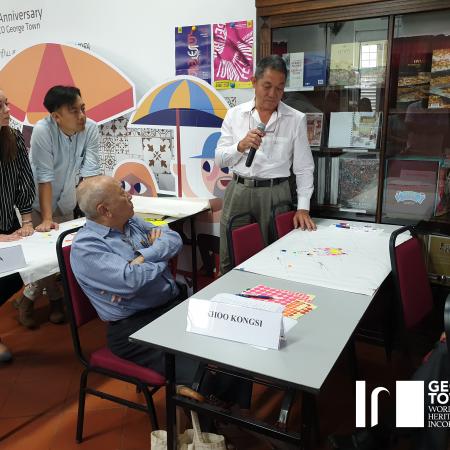
In line with the Disaster Risk Reduction and Management strategies for George Town Heritage City, GTWHI promotes knowledge of disaster risk reduction and management through workshops and awareness campaigns with and for the local communities.
The power of community buy-in is best demonstrated by Mr Khoo Teng Khoon (Secretary, Trustees of Boon San Tong Khoo Kongsi) testimonial. Mr Khoo is is one of the caretaker for the Category I heritage building of Boon San Tong Khoo Kongsi Clan Association building. He is one of the active participants exposed to the concept and importance of disaster risk reduction for cultural heritage, and was given trainings to identify the hazards, vulnerability and possible factors of disasters, hence, developed a disaster risk management plan for Boon San Tong Khoo Kongsi.
During the end of the workshop series, Mr Khoo was invited to the Experience Sharing Workshop on Disaster Risk Reduction Strategy among Heritage Cities in Southeast Asia, Pacific and Africa and shared the disaster management plan he prepared for Boon San Tong Khoo Kongsi.
During his presentation, Mr Khoo shared that he is mind-blown with the risks and mitigation opportunities he can conduct to ensure that the Boon San Tong Khoo Kongsi ancestral temple and the legacy passed down from his ancestors can be better safeguarded. Mr Khoo also committed that he will share the knowledge on disaster risk reduction for cultural heritage knowledge with his trustees to ensure their properties can be protected and handed down to the next generation.
Mr Khoo stories is one of the many that have encouraged GTWHI to continue with the path of meaningful community participation, which will eventually lead to a sustainable and better approach to disaster risk reduction and management for the site.

